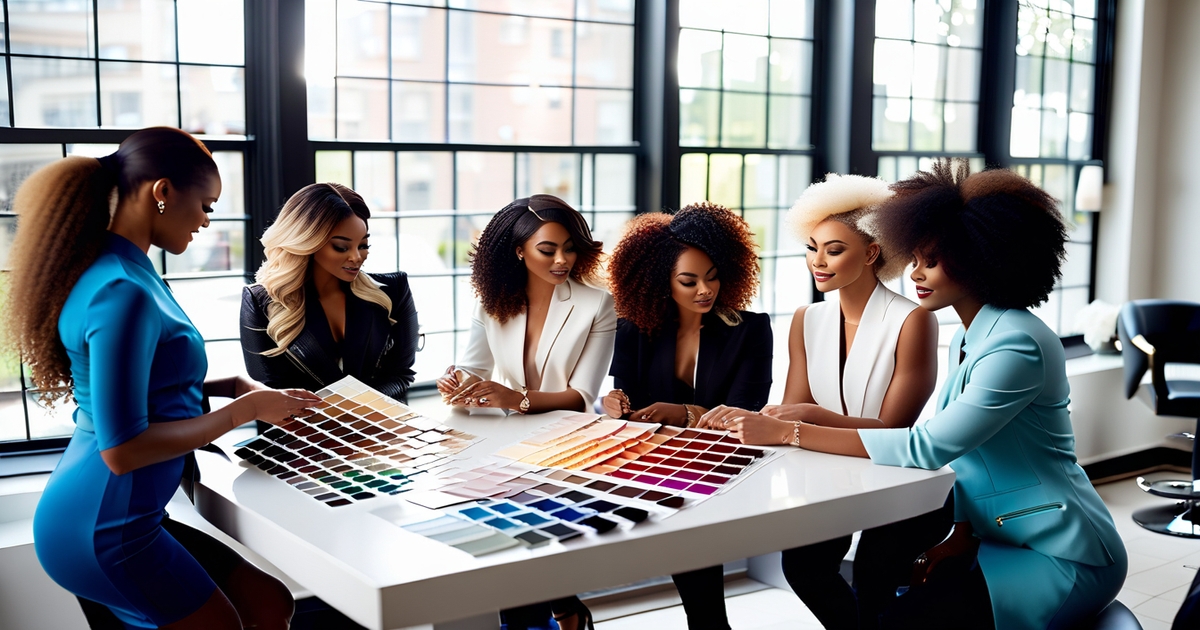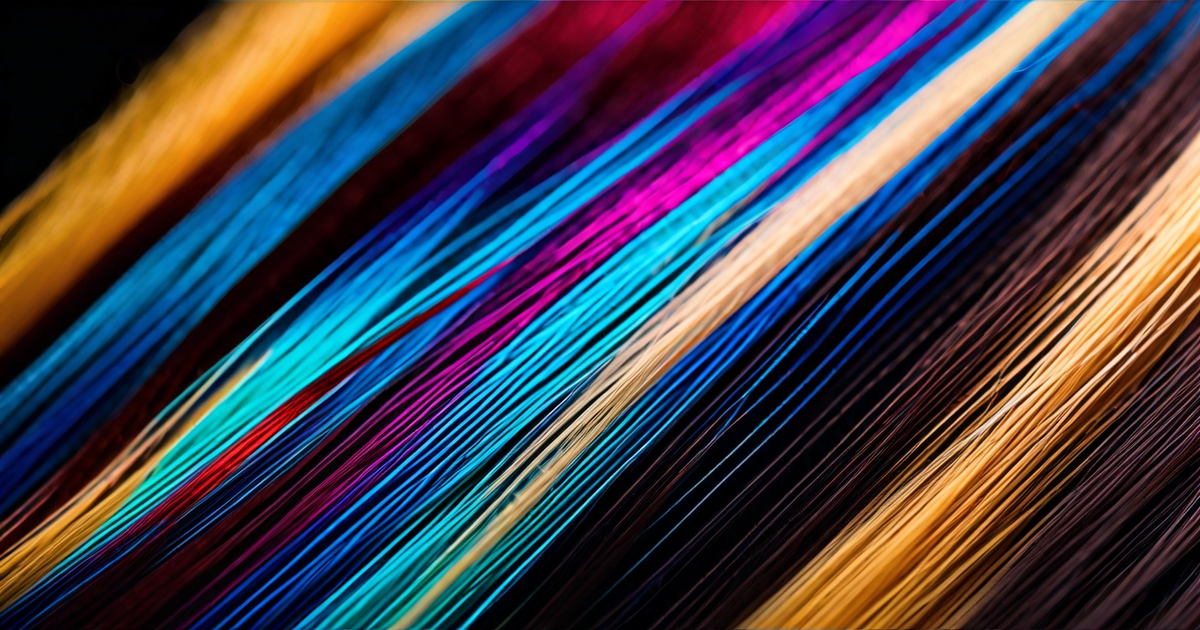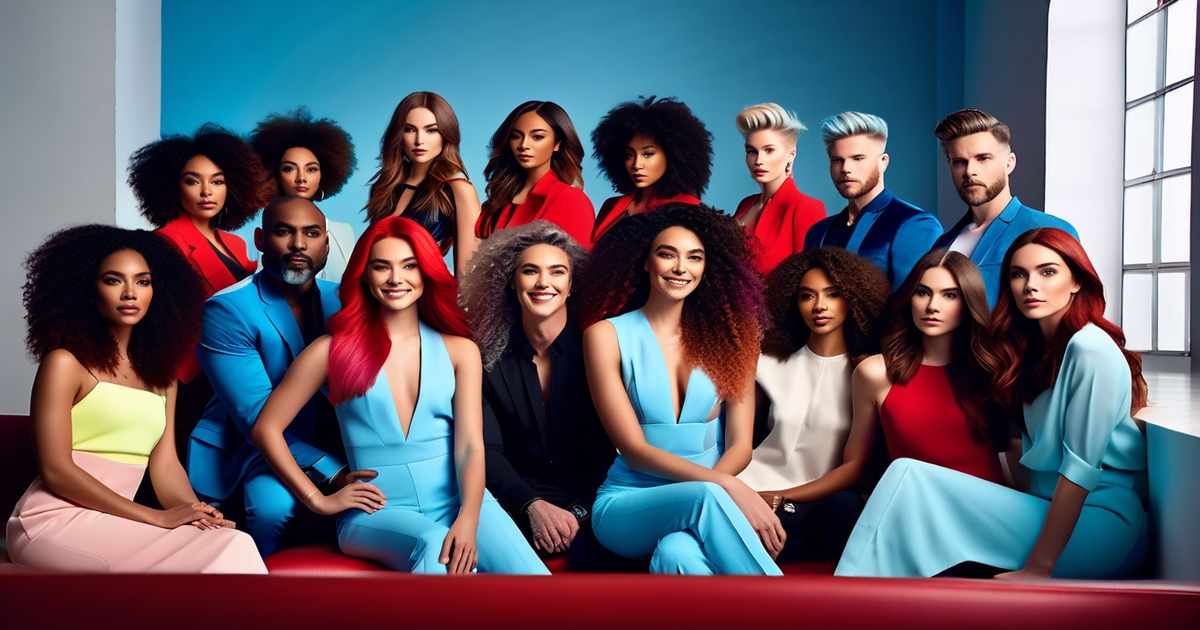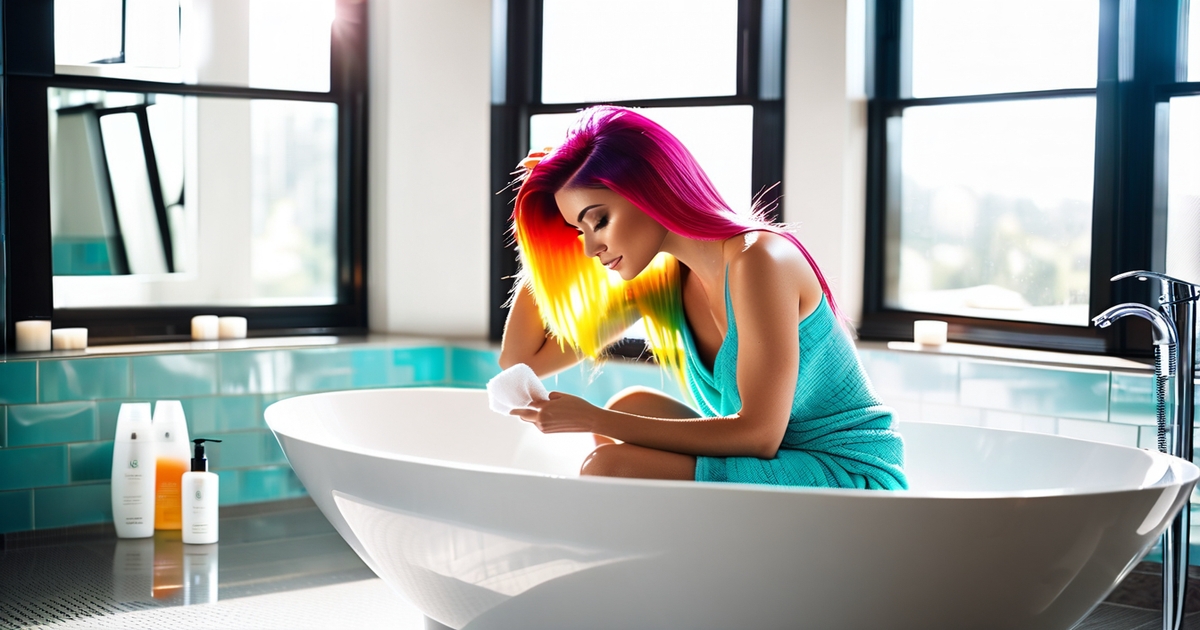50+ Stunning Hair Colors & Dyes to Inspire Your New Look in 2026

Key Takeaways
- Dive into the complete color range from classic naturals to daring brights, gentle pastels, contemporary metallics and rich jewel tones. Weigh the differences in shine, intensity and coverage to fit your vision and hair condition.
- Pick methods that style your end look like balayage for sun-kissed dimension, ombré for contrast, highlights for brightness and color melting. See a colorist for tricky blends or heavy lightening.
- Match shade to you–check skin undertone, eye color and lifestyle needs. Try it with strand tests and semi-permanent or temporary if you want low commitment.
- Know the chemistry so you can care wiser permanent dyes absorb for long wear and coverage, semi-permanent dye tinge the cuticle for gentle transitions, and temporary layer on top for fast swaps. Bleaching strips away natural pigment and needs considerate aftercare.
- Maintenance plan to keep your color pop wash less often, with cool water, use sulfate-free, color-safe products, add weekly masks, and minimize heat and UV. Schedule touch-ups based on shade and technique to avoid banding and fading.
- Act now shortlist 2 – 3 shades that complement your undertone, choose a technique that aligns with your upkeep, test a strand, and stock up on color-shielding products pre-dye day. Own it as personal style and modify your regimen to preserve your vibe.
🎨 Discover Your Personal Color Palette
Ready to discover your perfect color palette? Use our expert analysis to identify the colors that make you look and feel your absolute best. From skin undertones to feature matching, find your ideal color combinations.
Find Your Color Palette →Hair dye colors include soft blond and rich brown to vivid red, blue and pastel shades. Tones differ in undertone, depth, and finish — which resonates differently on various hairs.
Semi-permanent suits short-term change, while permanent gives longer wear. Warm tones give you glow, cool tones mute warmth, and neutrals stay balanced.
Safe use requires a strand test and caution with 20-vol or less at home. Next, specific advice, illustrations and actual examples.
📚 Recent Articles
Exploring the spectrum of hair dye colors
A complete palette bridges natural hair colors to fantasy shades, molded by hair color levels (1 darkest — 10 lightest), skin undertone, and technique options that determine shine and coverage.
1. The timeless naturals
Natural blonde, brunette, black and red cover levels 1–10, with gray ranging from ash gray and charcoal to silver and platinum. These shades tend to give balanced shine and even coverage, especially when matched to undertone: warm skin can carry golden blonde or chestnut; cool skin suits ash brown or espresso.
Red runs on a broad scale as well–ginger, copper and strawberry blonde for warm; cherry cola and burgundy for cool. Organic colors that frame features without screaming. They fade for most environments and extend gently.
Use the color wheel to steer tone: neutralize warmth with ash, or add warmth to counter greenish cast.
- Ideas: soft ash brown, golden dark blonde, espresso black, copper red, mushroom brown, sandy beige, cool silver
- Techniques: face-frame highlights, fine lowlights, root smudge, glossing
Soft highlights & lowlights wave with depth – no harsh lines. A clear or tinted gloss enhances shine and blends regrowth.
2. The bold vibrants
Magenta, blue, teal, purple provide high intensity and shiny impact, but typically require pre-lightening to 9–10 to really pop. Bleaching initially raises natural pigment, bypassing it moderates the effect to a subdued stain.
- Ideas: electric blue melt, ultraviolet roots with orchid mids, teal ends on a dark base
- Upsides: rich payoff, playful contrast, strong statement
- Care: color-safe, sulfate-free wash, cool water, spaced shampoos, frequent top-ups
Anticipate quicker fade, particularly warm pinks and reds. Deposit-only refreshes maintain the color vibrant between salon visits.
3. The soft pastels
Lavender, peach, baby blue and soft pink all read airy and calm. They compliment light eyes and fair to medium skin. Deeper skin really pops with greater contrast pastels like mint or periwinkle.
Even outcomes require a very pale, even background (level 9–10). Banding peeks out from beneath sheer pastels, so meticulous pre-lightening and toning are important.
Blends are trending: lavender to silver, rose to peach, or baby blue with mint ribbons. Low-maintenance tip: pastel gloss over a cool blonde for a wash of color.
4. The modern metallics
Silver, rose gold and smoky bronze lend a reflective, shimmery finish that sets itself apart from the matte shades via prismatic shine and cool-to-neutral cast in the light. Perfect for the runway, they depend on exquisite toning to keep brass at bay and that metal-polish shine.
Employ purple or blue shampoos, soft heat styling and frequent glossing for mirror-like tone.
- Ideas: liquid silver bob, rose-gold balayage, graphite shadow root
5. The deep jewels
Emerald green, sapphire blue and rich burgundy introduce plush depth and a luxe vibe, with high saturation and silky coverage. They compliment darker bases and warm skin tones, while cool skin flourishes with sapphire and wine tones.
Combine jewel roots with dimensional highlights—blackberry violet lights, emerald veils or sapphire slices—for a faceted, gemstone effect. For balance, use the color wheel: add a touch of warmth against cool skin, or an ash edge against warmth.
Follow up with sulfate-free shampoo and color masks to minimize fading.
- Ideas: emerald melt on level 3–4, sapphire balayage on level 5, velvet burgundy gloss on level 6
How to choose your perfect shade

Start with two anchors: where your hair is now, and where you want to land. Write down your existing level (very dark brown, medium brown, dark blonde, light blonde) as well as whether it's virgin or re-dyed. Little hops appear better than great bounds.
1-2 levels is gentler on hair. Preview shades with virtual try-ons, and do a patch test 48 hours prior to any dye.
| Shade family | Works best for | Try if you want | Avoid if |
|---|---|---|---|
| Ash blonde/brown | Cool undertones, light eyes | Reduce brass, sleek vibe | Skin looks flat or dull |
| Golden/caramel | Warm or neutral undertones | Sun-kissed warmth | You flush easily with warm tones |
| Copper/auburn | Warm or neutral | Energy and glow | Cool skin turns ruddy |
| Burgundy/plum | Cool to neutral, deep skin tones | Bold contrast, depth | You want ultra-natural |
| Black/espresso | Most undertones, high contrast | Drama and shine | Fine hair looks weighed down |
| Beige/neutral blonde | Neutral undertones | Soft balance | You crave high warmth or ash |
Skin undertones
Test undertones with fast samples. Look at veins at the wrist under daylight: green hints warm, blue or purple hints cool, a mix suggests neutral. Try jewelry: gold flatters warm; silver flatters cool.
A makeup hack proves quicker—dust pink blush on one cheek and peach on the other, the side that looks fresher indicates your undertone.
Cool undertones carry bluish or pink hues, and pair well with ash or blue-based shades: ash brown, smoky brunette, platinum, cool espresso, even navy or slate fashion tones.
Warm undertones radiate with golden, honey, copper and auburn tones that reflect the skin's warmth. Neutral can swing either way, beige or soft chestnut is a safe foundation.
Color can elevate or fight. Ash on warm skin can mute vibrance, while copper on cool skin can pull red in the face. For those with deep skin tones, rich shades suit you beautifully—think deep burgundy, warm chestnut or caramel lights to contour.
Hair type
Match formula to hair. Fine hair loves semi-per or soft perms colors. Thick/coarse hair usually requires cream-based, high-pigment formulas.
Curly hair, on the other hand, favors ammonia-free or oil-based color in order to protect moisture. Straight hair reveals lines, so blend cautiously.
Porosity gets results. High-porosity hair picks up quickly and may appear darker. Low-porosity requires extended processing and heat-safe direction.
Techniques help: balayage for curls, root smudge for straight hair, glaze to seal shine, foils for controlled lift. Always strand test to estimate tone and timing.
Tweak developer strength or timing ahead of a whole head.
Lifestyle fit
Pick maintenance you can stomach. If you travel often or have tight mornings, low-maintenance shades save time: soft brown, warm chestnut, beige blonde, or caramel highlights that grow out clean.
What's temporary and what's permanent? While temporary and semi-permanent suit hectic lifestyles, regular shade play or campus regulations, permanent covers grey and lasts longer but requires roots touching up every 4–8 weeks.
Orange is out in some offices—read the rules of your environment. Season shifts change skin tone a bit. Tweak depth or warmth ever so slightly throughout the year.
Keep roots soft with shadow roots, or refresh ends with gloss between appointments.
The science behind colored hair

Hair color emerges in the interaction of strands absorbing and reflecting light. That reaction type and quantity of melanin, which is genetically determined. Melanin is formed from the amino acid tyrosine with the assistance of the enzyme tyrosinase and a dash of copper.
At a normal cellular pH close to 7.4, melanin’s acid group (COOH) releases its proton and is negatively charged (COO-), which facilitates its binding in the hair cortex. Dyes deposit new color molecules where melanin resides or on the surface. That shift can alter the way light reflects off the strand.
Some hues just enhance tone, others cover base. Bleaching is different: it strips natural pigment first, then color can be added on top for control.
- Ammonia or monoethanolamine (MEA): raises pH to swell the hair and open the cuticle.
- Hydrogen peroxide: oxidizes melanin and develops dye precursors into larger molecules.
- Primary intermediates and couplers (e.g., p-phenylenediamine, resorcinol): react to build the target hue inside the cortex.
- Conditioning agents (fatty alcohols, silicones, polymers): reduce roughness after processing.
- Dyes without oxidants (direct dyes): sit near or on the cuticle in semi/temporary lines.
Permanent dyes
Permanent hair color implants giant molecules deep in the cortex, ensuring the color remains until you get a trim. This type of hair color can tone shift multiple levels, effectively cover gray hair, and maintain your LIFE STATUS QUO. Regular touch-ups every 4–6 weeks keep roots even, as hair grows roughly 1.25 cm per month.
Oxidation is at the heart of hair color formulas. Alkaline ingredients like ammonia raise pH, causing the cuticle to lift, while peroxide lightens melanin and polymerizes tiny monomers into larger, trapped molecules. This is why wash-out is slow.
With powerful findings come compromises. High pH and oxidative steps can break down bonds and increase porosity. Aftercare matters: gentle, low-pH shampoo, rich conditioner, bond-building treatments, and UV protection to limit fade and breakage.
Semi-permanent dyes
Semi-permanent color rests mostly in or on the cuticle, without penetrative shift. It blends highlights, increases shine and mellows out bleached lines.
It washes out in 6 – 12 washes, so it's a low-commitment trial run for color, ranging from soft copper to cool brown. Ideal for newbies, regular shade play or reviving ends in-between permanent appointments.
Temporary dyes
Temporary color remains on the hair's surface and washes away quickly. Sprays, chalks, gels and rinses provide speedy blue, pink or neon for an event or photos.
Apply sparingly to porous hair to prevent patchy grab. Allow products to dry, stay away from light-colored fabrics, and sleep on a dark towel to reduce absorption to clothing and pillow cases.
The colorist's secret techniques
More sophisticated coloring creates depth and polish and flow. They map tone to color theory, select the appropriate type of dye (permanent, demi, semi, or temporary) and coordinate shade to skin tone first, hair second. They read hair structure and natural pigment, which influences lift, fade and shine.
When you lift anything beyond two levels, heat is rising quick—red, orange, yellow—so there's not a lot of control. Clever timing, toners and reasonable expectations count. Custom blends and placement—balayage, ombré, highlights, and color melting—deliver multi-dimensional results that grow out beautifully.
Balayage
Balayage is a freehand painting technique that simulates sun-kissed light, using various hair color options. The colorist applies lightener or a soft hair dye on the surface, off the root, and thickens the paint toward the ends. This technique provides a gentle gradient and a glow that feels worn-in and not stamped, making it a popular choice for many looking to change their hair color.
Regrowth is low maintenance, as there's no harsh line at the scalp. Many can space salon visits 10–16 weeks apart with mini glossings in between. Brunettes often add caramel ribbons, blondes receive pale linen panels, and redheads acquire copper or strawberry warmth, showcasing the versatility in different hair colors.
It works beautifully on straight, wavy, and curly hair, from short lobs to long layers. Curl patterns display painted pieces with additional pop, enhancing the overall hair health.
A skilled colorist balances hair porosity, old color, and skin tone to position light where it flatters the face, then selects demi-permanent glazes to lock in shine and maintain the desired color goal.
Ombré
Ombré transitions from a deeper root to lighter tips in an obvious gradient. Think coffee to latte, or black to silver for audacious flavor.
It's perfect for a contrast-craving gal with no time for root maintenance. Vivid tips—teal, rose, violet—provide a fashion-forward kick that still feels wearable on a daily basis.
Maintenance means toning to cool brass as it grows out and consistent hydration treatment. Bond builder in salon, hydrate at home, and there's the heat to keep those light ends smooth.
Highlights
Highlights brighten markings to small areas to help create light and depth. They lift the eye, create motion and make fine hair appear more full.
Foils provide lift exact for pure blonding. Babylights are micro-fine for a soft halo — fabulous near the hairline. Chunky highlights work for graphic looks or curly hair that camouflages denser weaves.
Lowlights can be interspersed to add dimensionality, since highlights pull light forward and lowlights push tone away, creating a contrast that appears authentic, not two-dimensional. Great for a little something done but not all bleach, and simple to adjust with a semi-permanent gloss.
Cut back on weekly shampoos and slumber on silk to keep tone and shine intact.
Color melting
Color melting melds together two or more shades so you don't see lines — just a soft swoosh of color. It's applied for beige-to-pearl blondes, espresso-to-mocha brunettes, or rainbow fades that bleed at the joins.
The goal is a gentle, natural-feeling transition where each shade intersects and 'blends.' It controls warmth with its layering toners that complement the underlying pigment, rather than battling it when you're at a two-level lift or greater.
Skilled hands matter: the brush angle, saturation control, and choice of demi-permanent at the seams decide if it's seamless or streaky. Check in with a pro to help match your undertone, eye color, lifestyle and product selection.
The right map produces color that flatters skin and grows out clean.
Beyond the bottle: The psychology of color

Hair dye isn't just about hue and luster; it also reflects personal preferences and cultural signifiers. The selection of different hair colors can boost bravado, resist conformity, or nod to tradition. This combination of hair color, skin tone, and eye color communicates much about an individual before they even speak.
Color and identity
Hair color is like a standard for identity. A vivid copper, a deep black, or a cool ash tells a short story: bold, grounded, or calm. We make split-second decisions, and color appeals to those decisions. Darker tones can read serious or intellectual. Lighter tones can tend to feel youthful or airy.
These are stereotypes and not rules, but they nonetheless direct social signals in everyday existence. Culture runs through color. Black hair, in many Asian communities, is a sign of youth, vibrancy and connects to conventional ideals of beauty. Blond hair, in much of the west, coincides with youth and beauty standards.
Red hair bears legends of flame and temper in the UK and Ireland. Subcultures stake identity with colour too—consider punk-era neons as a stand against standards and class divisions. If you want to lean into identity, select a shade that reflects your beliefs or subverts a cliche you despise.
The 'dumb blonde' cliché still looms; defying it with razor wit and precision craftsmanship transforms locks into statement. Go for offbeat—surprise copper streaks, tempestuous blue tips or an inky, mirror-gloss black—to stamp your space with purpose.
Trends and culture
Celebrity colorists and influencers try out new shades on red carpets and Instagram feeds, then studios amplify them. An amber 'costly brunet', a porcelain 'milky blond' or 'glass black' can storm in a month and go global. Things come in loops.
Platinum blonds are swinging back with brand new toners. The deep brunettes make a comeback when no style is in. Copper spikes every couple of seasons as a mood for warmth and edge. Offbeat colors made it mainstream.
Pastel pinks in music videos, teal tips in e-sports, lilac in K-beauty feeds — once-subcultural hues became daily wear. Before your next trip, pore over recent runway recaps, leading salon grids, and film stills to identify what's peaking and where it fits in your life.
Personal expression
Choosing a color is art to be worn. It can complement a season of transition or celebrate a minor victory. Go for an assertive tone if you're due for a reboot. Color needs to harmonize with your makeup, closet and undertone.
High contrast—dark hair/light skin, or blond/deep skin—reads dramatic. Low contrast smells gentle and serene. Ways to personalize:
- Custom blends: tweak warmth and depth to suit undertone.
- Accent highlights: face-framing lights, money pieces, or peekaboo panels.
- Placement play: dip-dye ends, split-dye halves, or hidden layers.
- Finish choice: matte, satin, or high-gloss to set the mood.
- Black: signals strength, heritage, and polish; can read serious.
- Brown: stable, reliable, and smart. Often trusted in work spaces.
- Blond: youthful, bright, and social; also faces underestimation.
- Red: bold, spirited, and rare; tied to feistiness in some regions.
- Pastels: gentle, creative, and playful; soft but distinct.
- Vivid brights: fearless, rebellious; echoes punk roots and self-rule.
How to maintain your dyed hair

Holds color when care meets your hair's needs. A custom regimen keeps hues vibrant, styles protected from heat and sun, and extends color between salon appointments. Schedule root touch-ups or glosses every 4–8 weeks or refresh from home with semi-permanent color.
Get trims every 6–8 weeks to sweep away split ends so color appears fresh, not faded. Apply heat tools sparingly, and ALWAYS protect with a heat protectant. Pre-color treatments fortify prior to dye, so pigments adhere more effectively and endure.
Washing routine
To maintain your hair color, wash less frequently to slow color fade. Most find that washing 2–3 times per week keeps hair colors richer. Daily washing strips color quickly, particularly reds and pastels. On sweaty days, consider rinsing and conditioning, or opt for a scalp-friendly dry shampoo.
Cool water makes pigments stick. Warm is okay for comfort, but skip hot water, which opens the cuticle and bleeds color. Choose mild, color-specific, sulfate-free shampoos.
Avoid harsh surfactants and try to steer clear of parabens and petrochemicals whenever possible. If you live in an area with hard water, minerals can mute your hair color options. Installing a filter or using a color-safe clarifying wash weekly can help.
Incorporate a weekly mask for moisture and shine. Nothing maintains the life of colored hair like deep conditioning at home or salon. It keeps dyed hair supple so it reflects light and looks vibrant.
Product selection
Go color-safe line to line. Dyed hair shampoos, conditioners, masks, and stylers buffer pH, seal the cuticle, and slow wash-out. If you need to clarify, opt for a color safe version and use sparingly.
Leave-ins and serums provide slip, control frizz and enhance shine. A light, silicone blend can protect fine hair, while luscious creams are ideal for thick or coily hair.
ALWAYS layer a heat protectant before blow-dry/curl/straightening. Stay away from harsh chemicals like strong sulfates, high-alcohol sprays and petrochemicals that strip color. If you tone at home, choose deposit-only gloss with zero ammonia or peroxide.
- Fine hair: color-safe volumizing shampoo; lightweight leave in; thermal spray to 230°C.
- Thick/coarse: sulfate-free hydrating wash; silicone-serum; rich mask weekly.
- Curly/coily: co-wash for color, Glycerin-free in humid regions, butter cream.
- Blonde/highlighted: purple shampoo 1× weekly; bond-repair mask; UV mist.
- Red/fashion shades: pigment-depositing conditioner; gentle cleanser; shine spray.
Environmental protection
Sun, chlorine, and pollution fade color and dry ends quickly. UV busts up pigments, pool chlorine bonds to hair, salt pulls moisture and roughens the cuticle.
Don't forget to sport a hat, scarf, or UV-protect spray outside. Reapply if you're out in direct sun for hours. Wet hair with tap water, coat with conditioner prior to swimming and rinse well and wash with a color-safe cleanser afterward.
In hard-water pools, a fast chelating rinse does the trick. Wear protective styles—braids, buns, twists—to reduce exposure and friction. Air dry when possible, or use cool settings on tools to minimize fade and damage.
Conclusion
Shade, tone, and care color co-author that narrative. Bright copper ignites joy. Cool ash can calm a bold cut. Deep brown can anchor a new beginning. Every pick has a vibe and a purpose.
To choose wisely, pair the shade to your complexion, lighting, and lifestyle. Look at the undertone. Check out the dye box/salon notes. Request swatch tests. Note how wash, sun and heat alter the color. Baby steps are good. A gloss, a root smudge, or soft highlights can build trust and keep hair strong.
Just like that, you're ready to experiment with a new hue. Take your pick of one shade to test drive. Post a picture in good light. Request advice and then nail it.
Frequently Asked Questions
What hair dye colors are trending right now?
Luxurious brunettes, multidimensional coppers, icy ash blondes, and gentle pastels are trending. Bold hues like cherry cola and midnight blue are in, but easy, natural hair color options remain a force each season.
How do I choose a hair color that suits my skin tone?
To match undertones effectively, those with cool skin tones often look great in ash, beige, or cool reds, while warm skin benefits from golden, caramel, or copper hair colors. Neutral skin can rock most shades, making it easier to explore different hair color options.
Will dyeing my hair damage it?
All hair color options involve some damage, particularly bleach, while permanent hair color formulas lift the cuticle more harshly. To reduce damage, consider using bond builders and maintaining a protein-moisture balance with regular trims for healthy hair.
How long does hair color last?
Semi-permanent hair color options last for 6-12 washes, while demi-permanent lasts 20–28 washes. Permanent hair color formulas endure until hair grows out, but can fade in 4–8 weeks. Reds fade the fastest, while darker hair colors last longer; using color-safe shampoo and cool water can help extend their life.
What techniques do colorists use for natural-looking results?
Balayage, foilyage, root smudge, and lowlights all add soft blends and depth to different hair colors. They customize developer strength, placement, and processing time to your hair color options. Strand testing directs permanent hair color formula selection for uniform lift and tone.
Can I go from dark to blonde in one session?
Dark hair requires staged lightening to preserve integrity, often needing several appointments and bond builders. A consultation and strand test will help establish obtainable hair color options and a timeline for achieving your color goal.
How do I keep colored hair vibrant and healthy?
Try sulfate-free, color-safe products for your hair color, and rinse with cool water less frequently. Deep condition weekly for hair health and protection, while also refreshing your tone with glosses to maintain your desired hair color options.